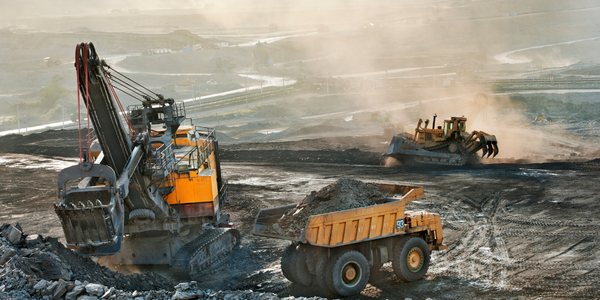公司规模
Large Corporate
地区
- America
国家
- Canada
产品
- IBM Kenexa LCMS Premier on Cloud
技术栈
- Cloud Computing
- Learning Content Management System
实施规模
- Enterprise-wide Deployment
影响指标
- Productivity Improvements
- Employee Satisfaction
技术
- 平台即服务 (PaaS) - 应用开发平台
适用行业
- 矿业
适用功能
- 人力资源
服务
- 云规划/设计/实施服务
关于客户
PotashCorp 是全球产能最大的肥料公司,生产三种主要农作物养分:钾肥、氮肥和磷酸盐。该公司业务遍布全球,在帮助世界种植所需粮食方面发挥着重要作用。随着世界人口不断增加,像 PotashCorp 这样的公司正在支持利用现有土地和资源种植更多粮食的方法。PotashCorp 是全球最大的钾肥生产商(钾肥是农作物肥料的主要成分),其加拿大业务占全球产能的五分之一。磷酸盐和氮肥也是 PotashCorp 产品的重要组成部分。开采钾肥和磷酸盐以及捕获氮是复杂的过程,工人安全是 PotashCorp 关注的重点。
挑战
PotashCorp 是全球最大的化肥公司,其目标是成为全球最安全的资源公司之一。为了实现这一目标,该公司需要为在多个远程站点工作的 5,000 多名员工提供一致、高质量的培训。过去,每个站点都开发自己的培训材料。这造成了大量重复工作,并且很难确保每个站点都符合最新的公司和监管最佳实践。PotashCorp 需要一种方法来开发和向每个工作站点提供标准培训材料,无论这些站点有多偏远。
解决方案
为了确保全公司培训的一致性,PotashCorp 最初希望实施学习管理系统 (LMS)。然而,PotashCorp 组织和人才发展高级总监 Candace Laing 在研究过程中很快发现,单靠 LMS 无法满足 PotashCorp 的所有学习需求。PotashCorp 的战略中缺少的是学习内容管理系统 (LCMS)。经过九周的实施,PotashCorp 已开始利用其新的 LCMS 配置多种格式的课程模板,并发布带有交互式组件的培训计划。这将有助于提高培训材料的质量,因为 PotashCorp 正在追求世界一流的安全绩效。
运营影响
数量效益

Case Study missing?
Start adding your own!
Register with your work email and create a new case study profile for your business.
相关案例.

Case Study
Underground Mining Safety
The goal was to produce a safety system to monitor and support underground mining operations; existing systems were either too simple (i.e. phone line) or overly complex and expensive, inhibiting deployment, and providing little-to-no support in event of an accident. Given the dangerous nature of the mining work environment and the strict regulations placed on the industry, the solution would have to comply with Mine Safety and Health Administration (MSHA) regulations. Yet the product needed to allow for simple deployment to truly be a groundbreaking solution - increasing miner safety and changing daily operations for the better.

Case Study
Mining Firm Quadruples Production, with Internet of Everything
Dundee Precious Metal’s flagship mine, in Chelopech, Bulgaria, produces a gold, copper, and silver concentrate set a goal to increase production by 30%. Dundee wanted to increase production quality and output without increasing headcount and resources, improve miner safety, and minimize cost.

Case Study
Fastenal Builds the Future of Manufacturing with MachineMetrics
Fastenal's objective was to better understand their machine downtime, utilization, quality issues, and to embrace cutting-edge manufacturing technology/process improvement capabilities to bring their team to the next level. However, there was a lack of real-time data, visualization, and actionable insights made this transition impossible.

Case Study
Joy Mining Systems
Joy equipment faces many challenges. The first is machine integration and control. The business end of the machine has a rapidly-spinning cylinder with 6-inch diamond-studded cutting teeth. It chews through rock at rates measured in tens of tons per minute. The system grinds through the rock in front, creating a rectangular mine tunnel. Hydraulic lifters support the ceiling as the machine moves forward. Automated drills and screws drive 3-ft long screws into the ceiling to stabilize it. The rock and coal fall into a set of gathering "fingers" below the cutting cylinder. These fingers scoop up the rock and coal and deposit it onto a conveyor belt. The conveyor passes under the machine and out the back. A train of conveyor belt cars, up to a mile long, follows the cutter into the mine. The rock shoots along this train at over 400 feet per minute until it empties into rail cars at the end. Current systems place an operator cage next to the cutter. Choking dust (potentially explosive), the risk of collapse and the proximity of metal and rock mayhem make the operator cage a hazardous location.

Case Study
Improved Monitoring in Industrial Manufacturing Facility
When your crane is moving tons of magma-hot iron, you can’t afford an unexpected failure. McWane Ductile knew monitoring the crane motor metrics within their facility could help prevent a mechanical failure that would strand an enormous bucket of molten metal overhead. Unfortunately, their legacy wired monitoring system couldn’t work with moving objects in this extreme environment. If they could integrate wireless capabilities into their existing equipment they could extend their monitoring capabilities without starting over from scratch.




